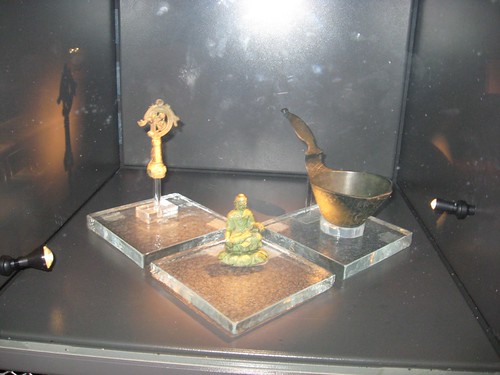Summer is a good time for archaeological news. Very often there is less happening in the world with different parts of the western world having summer holiday season at different times. The midsummer bank holiday means the start of the holiday season in the Nordic countries and the closure of the north in July, and UK and southern Europe close in August.
Even if the excavation news are not flooding in, yet, we have been served with further interpretations from the Stonehenge Riverside Project and Roman finds from Japan. The former news reinterprets Stonehenge as the ultimate monument for world peace, even if only in order to unify Britain. The latter find has been seen as a sign of the Romans in Japan. The beads (see above and below), with a hole through the middle, were made with a multilayering technique where craftsmen covered one layer of glass with others and often sandwiched gold leaf in between. Three glass beads were discovered in total. They came from the fifth-century Utsukushi burial mound in Nagaoka near Kyoto and they were probably made at some point between the first and the fourth century.
Even if the glass beads from this Japanese tomb show the existence of extensive exchange networks in the ancient world, it is quite unlikely that there was a direct contact between the Roman Empire and Japan. The Romans did reach Afghanistan and built outposts there so a meeting post somewhere in Asia could not been impossible. However, by the fifth century AD these kind of contacts are unlikely. During this time the Roman Empire had practically fallen apart, which suggests that the beads had taken some time to reach the shores of Japan.
The mounds in the Kyoto area from which the beads were found were huge (see an imperial example above). The sheer size shows that they belonged to the highest section of the society and suggest that the exotic finds did have extra value that made them fit for important funeral assemblages. As an Huffington Post article points out, there is one Indian Buddha from the Helgö island (in Sweden outside Stockholm) that was an important Scandinavian trading post in the sixth century AD. These finds show that the period saw at least single objects travelling vast distances along the exchange networks, perhaps changing hands regularly in gift giving or exchanging knick knack. Nevertheless, these can be classified as exotica reaching their ultimate, distant final destinations.




No comments:
Post a Comment